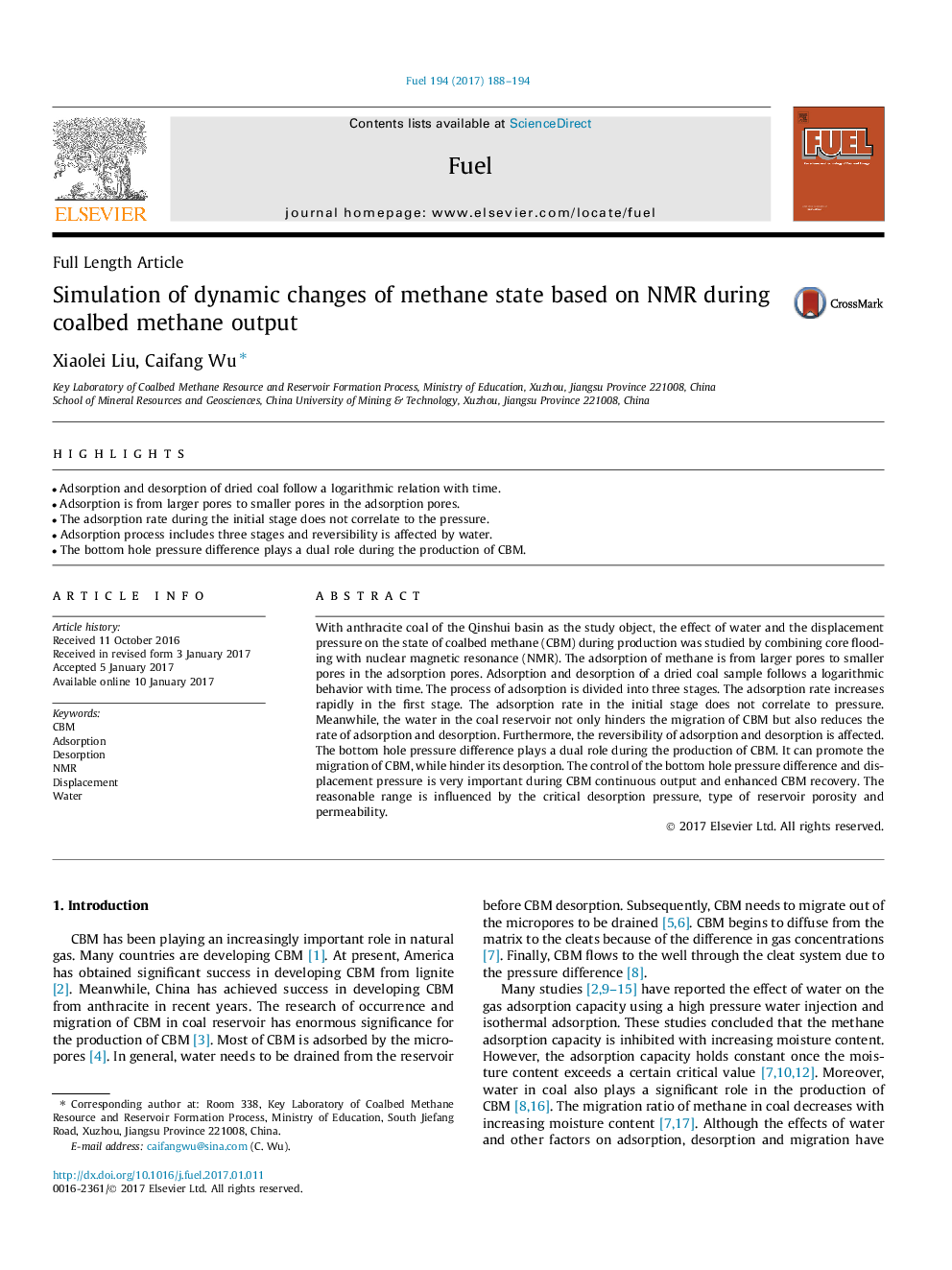| Article ID | Journal | Published Year | Pages | File Type |
|---|---|---|---|---|
| 6475443 | Fuel | 2017 | 7 Pages |
â¢Adsorption and desorption of dried coal follow a logarithmic relation with time.â¢Adsorption is from larger pores to smaller pores in the adsorption pores.â¢The adsorption rate during the initial stage does not correlate to the pressure.â¢Adsorption process includes three stages and reversibility is affected by water.â¢The bottom hole pressure difference plays a dual role during the production of CBM.
With anthracite coal of the Qinshui basin as the study object, the effect of water and the displacement pressure on the state of coalbed methane (CBM) during production was studied by combining core flooding with nuclear magnetic resonance (NMR). The adsorption of methane is from larger pores to smaller pores in the adsorption pores. Adsorption and desorption of a dried coal sample follows a logarithmic behavior with time. The process of adsorption is divided into three stages. The adsorption rate increases rapidly in the first stage. The adsorption rate in the initial stage does not correlate to pressure. Meanwhile, the water in the coal reservoir not only hinders the migration of CBM but also reduces the rate of adsorption and desorption. Furthermore, the reversibility of adsorption and desorption is affected. The bottom hole pressure difference plays a dual role during the production of CBM. It can promote the migration of CBM, while hinder its desorption. The control of the bottom hole pressure difference and displacement pressure is very important during CBM continuous output and enhanced CBM recovery. The reasonable range is influenced by the critical desorption pressure, type of reservoir porosity and permeability.
